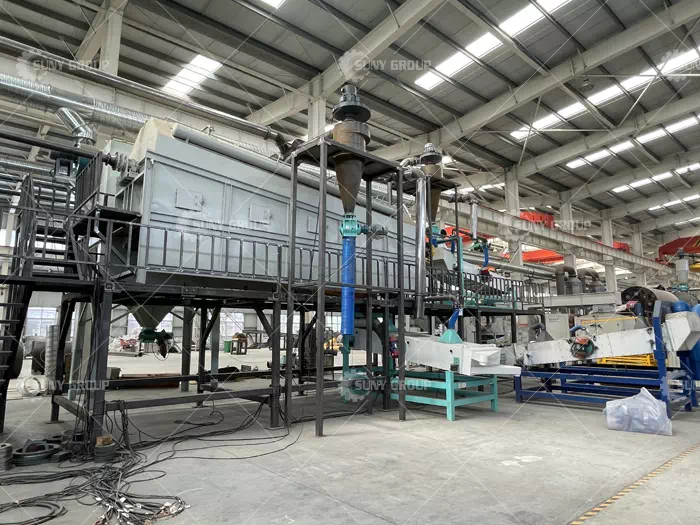News
What is the recycling process for lithium-ion batteries?
Time:2023-09-26 16:50:47
With the rapid development of electric vehicles and renewable energy, lithium-ion batteries have become an indispensable energy storage device in modern life. However, the large-scale use and disposal of lithium-ion batteries also brings challenges in waste management and resource recovery. Therefore, the recycling processing of lithium-ion batteries has become crucial to reduce the impact on the environment and achieve sustainable use of resources.
The process of lithium-ion battery recycling involves several key steps, as described below:
Lithium battery recycling production line
Collection and classification: First, used lithium-ion batteries need to be collected and classified according to type and chemical composition. This helps ensure the effectiveness and safety of subsequent processing.
Safe handling: Before proceeding with lithium-ion battery recycling, safety measures must be taken to prevent battery damage and accidents. This includes discharging the battery to ensure that the electrical energy within it has been released.
Breaking down and shredding: The next step in the recycling process is to break down and break down the lithium-ion batteries into smaller components. This usually involves mechanical manipulation or chemical treatment. The purpose of decomposition and crushing is to separate the different components of the battery, such as positive electrode material, negative electrode material, electrolyte and packaging materials.
Material Separation and Recycling: Decomposed lithium-ion battery components are separated and recycled through physical and chemical methods. This includes the use of technologies such as magnetic separation, screening, flotation and solvent extraction to separate and recover valuable materials including lithium, cobalt, nickel, copper and aluminum.
Remanufacturing or reuse: Recycled materials can be used to remanufacture new lithium-ion batteries or other applications. For example, recycled metal materials can be used to make new battery components, while recycled lithium can be used to produce fertilizers, alloys, etc.
Waste Disposal: Waste and by-products generated during the recycling process require appropriate treatment and disposal. This may include safe waste disposal such as incineration, landfill or other environmentally friendly disposal methods.
It is worth noting that the lithium-ion battery recycling process needs to comply with relevant safety regulations and environmental regulations. This includes handling and disposing of hazardous materials that may be present in batteries and ensuring workplace and environmental safety.
The importance of lithium-ion battery recycling lies in reducing reliance on limited resources, lowering demand for raw materials, and reducing negative impact on the environment. By implementing effective recycling and reuse strategies, we can minimize the environmental pollution caused by discarded lithium-ion batteries and achieve sustainable use of resources.
To summarize, the lithium-ion battery recycling process involves key steps such as collection, sorting, safe handling, disassembly, material separation and recovery, remanufacturing or reuse, and waste disposal. The goal of this process is to reduce consumption of finite resources, reduce environmental impact, and promote sustainable energy storage technology. Through efficient lithium-ion battery recycling, we can contribute to sustainable development and drive the sustainable transition to clean energy and electric mobility.
LATEST NEWS
CONTACT US
Tel: 0086-13674945231(whatsapp)
Email: sunymachine@gmail.com
Add: Henan Communication Industrial Park) 5th St., Economic-Technological Development Zone, Zhengzhou
